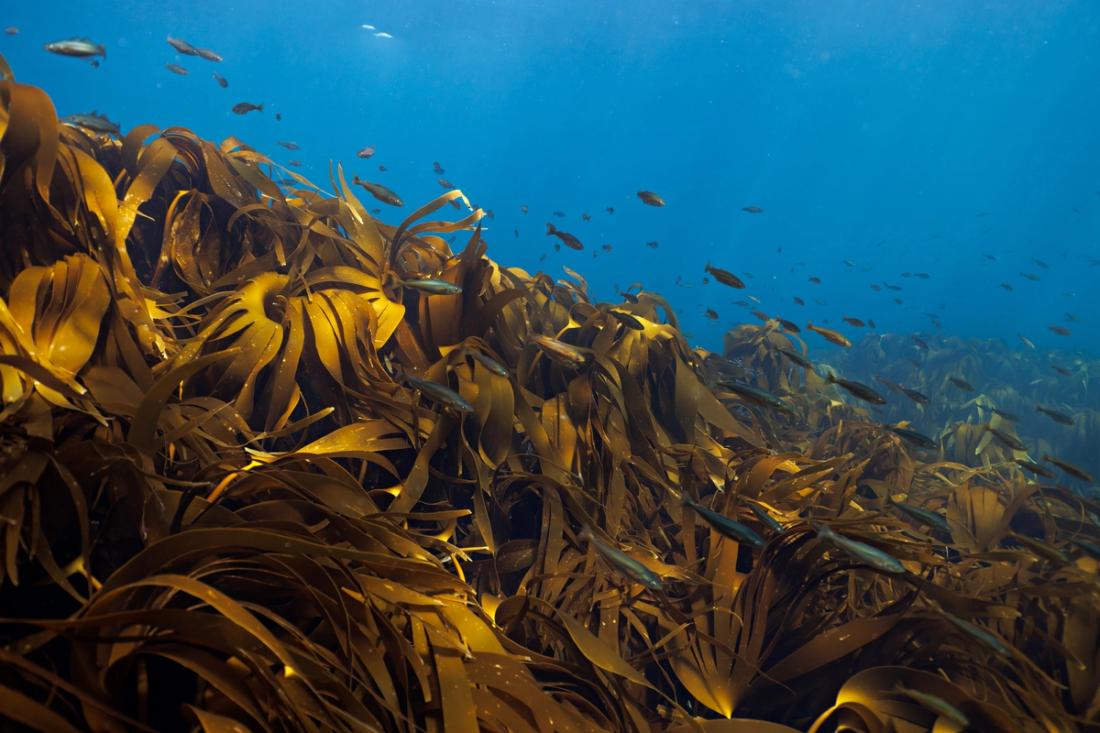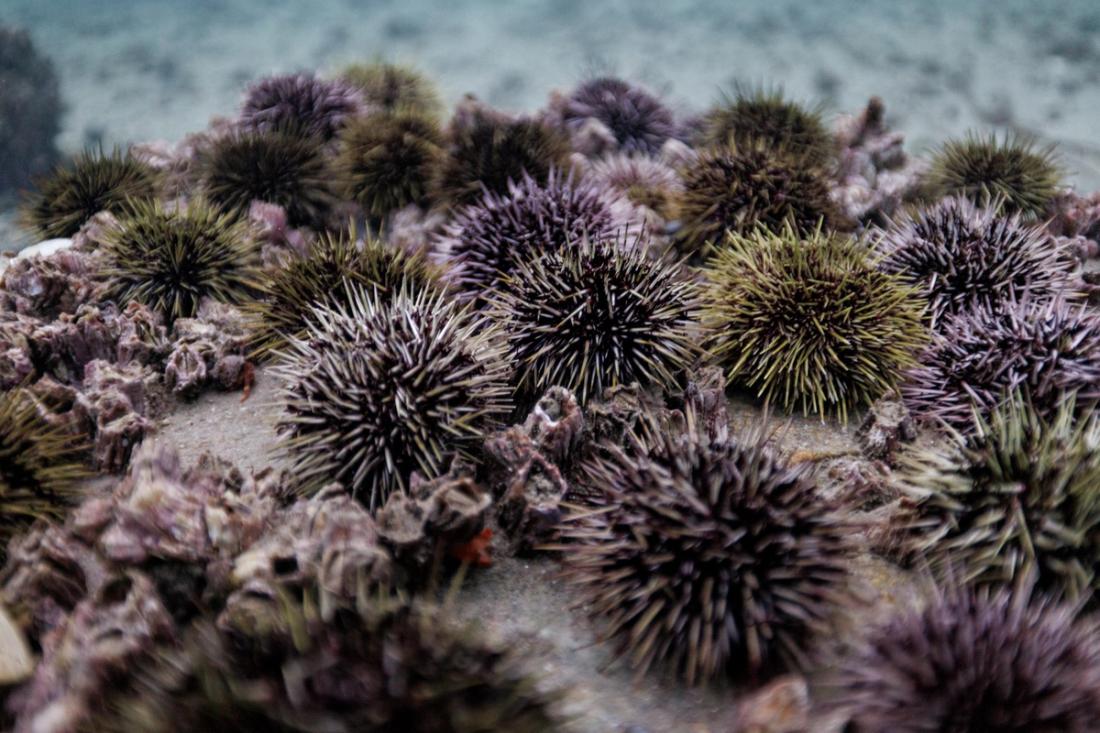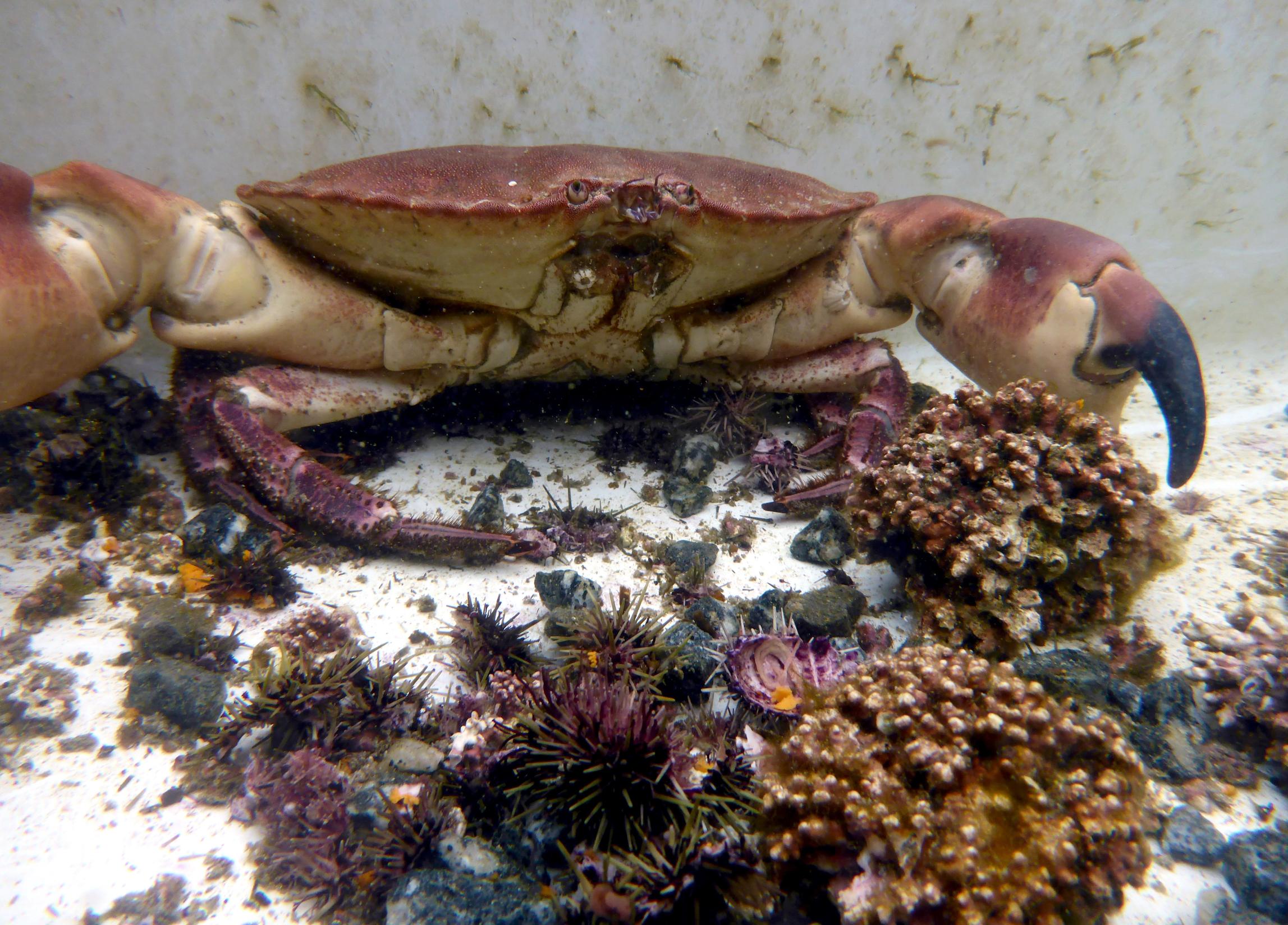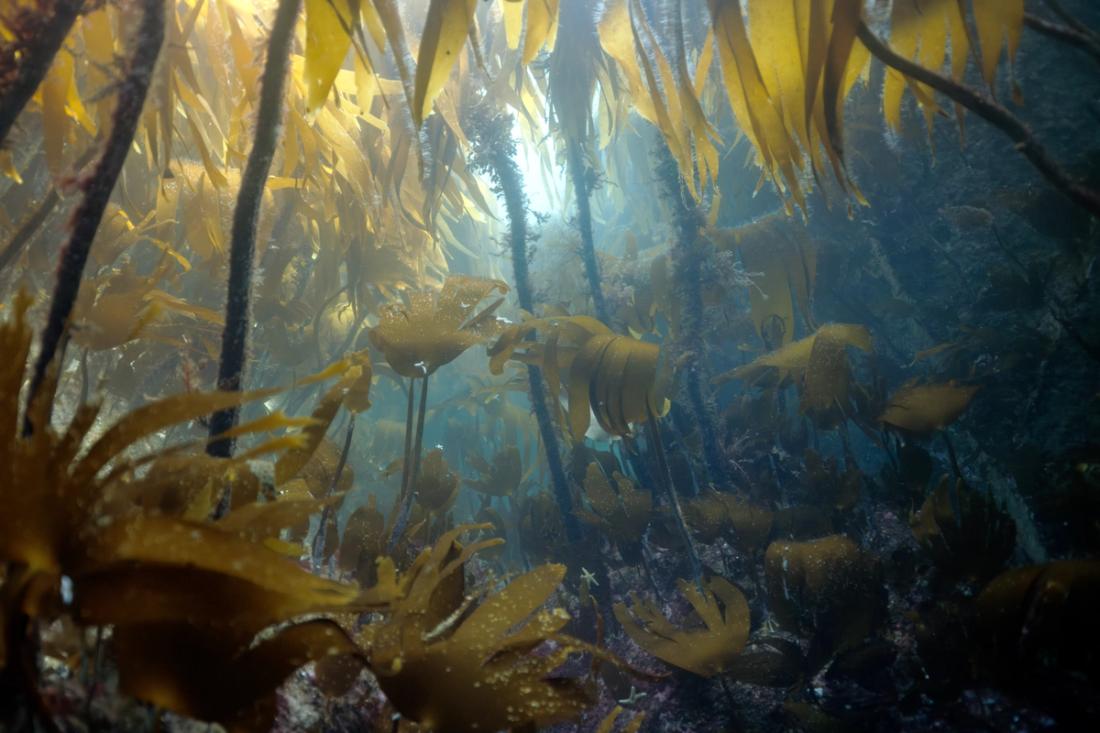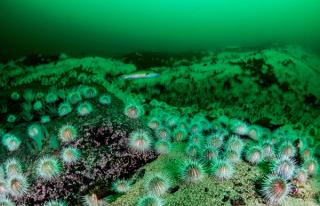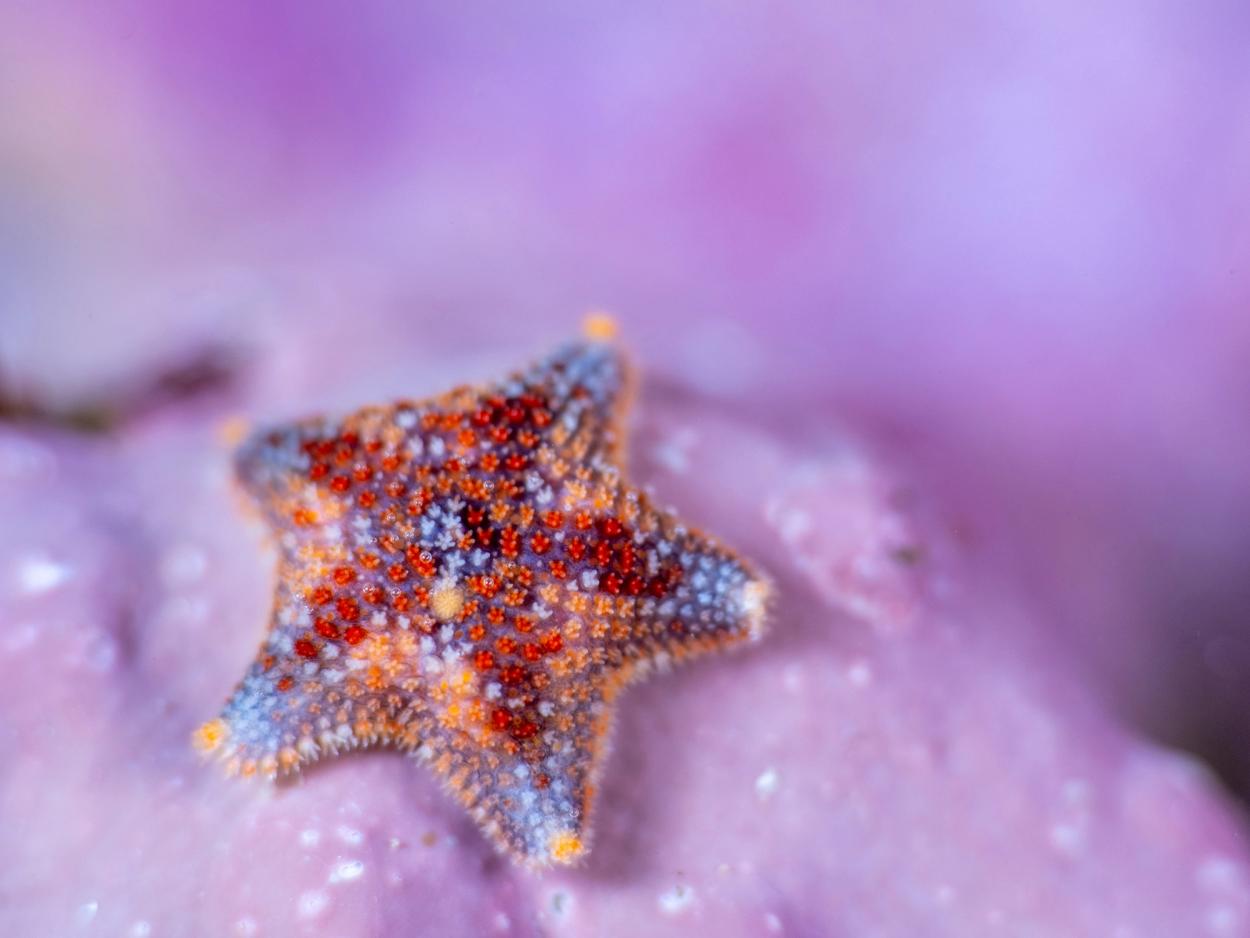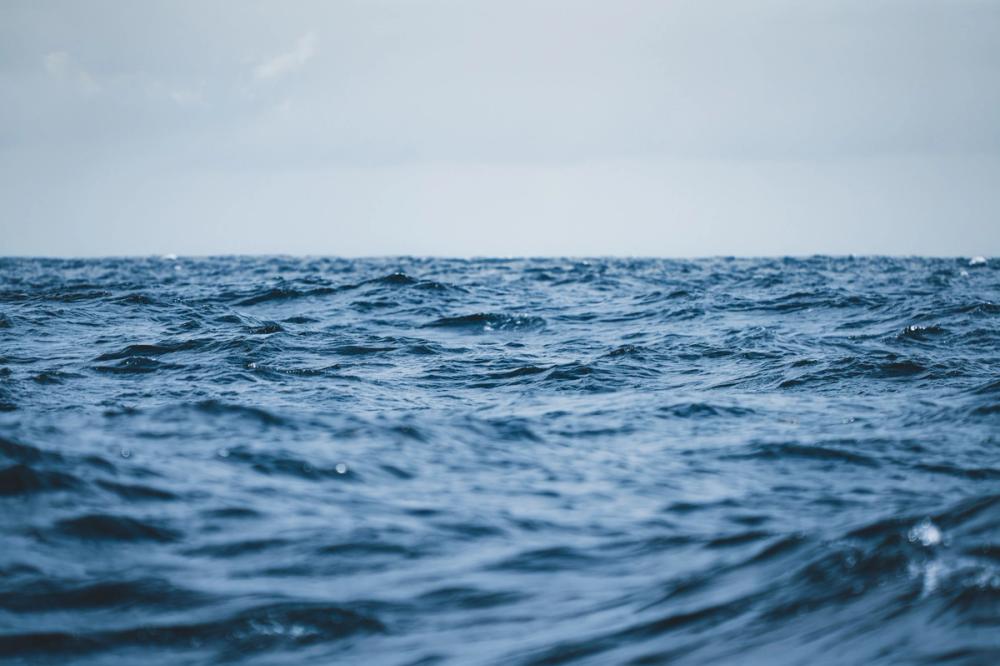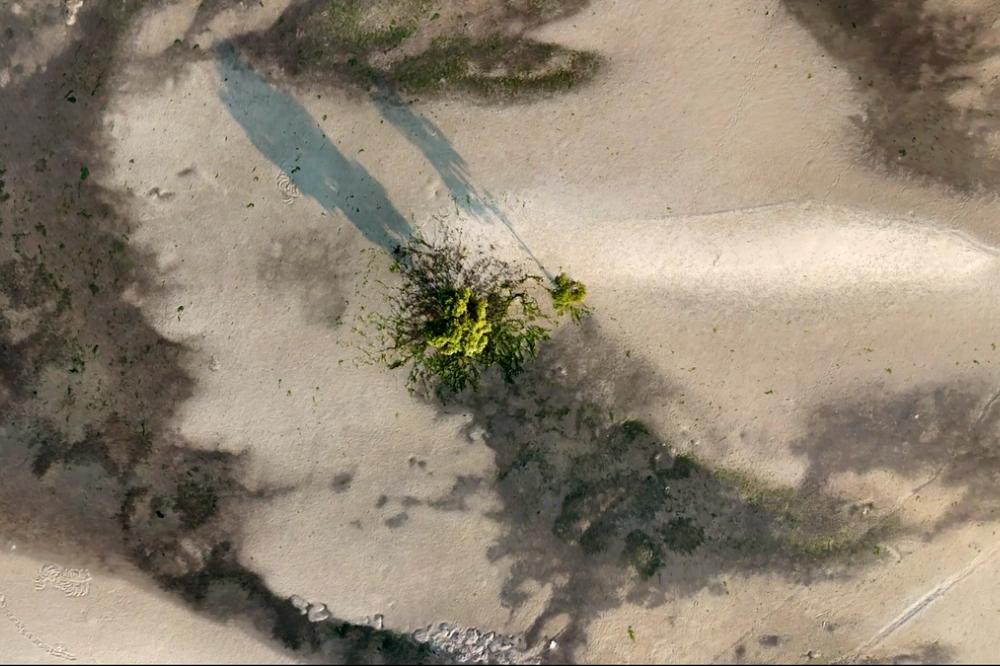Ecosystem regime change
Rocky shore Game of Thrones
The myriads of small rocks surrounding the island of Grip.
12 June 2025
A timeline of the battle between natural and dysfunctional coastal ecosystems
Over the last few decades there have been several radical shifts in the fauna and flora along the rocky shores of Norway. Zooming into a site in Lofoten, northern Norway, we can follow these shifts in ecosystem states from the 1970s till today. Zooming out on a map, we can explore our best extrapolations on how representative the different ecosystem states are in a regional or national perspective.
The shifts over time have been: A dramatic transformation from pristine kelp forests dominating the coastline for decades (image 1) to green sea urchin (Strongylocentrotus sp.) barrens in the 1970s (image 2, along mid and northern Norway). From the 1990s, the green sea urchins were gradually reduced due to predation by the brown crab (Cancer pagurus) (image 3), resulting in recovery of the kelp forests (image 4). This was first observed in Trøndelag in the 1990s, expanding gradually northwards to the border between Nordland and Troms around 2020. Observed mainly from the 2000s, an increasing growth of turf a.k.a. filamentous algae have replaced large kelp forests in south and mid Norway (image 5, blue on the map). More recent observations of a new sea urchin desert created by red sea urchins (Echinus esculentus, image 6) turned out to be representing increasing observations of red and white sea urchin grazing over larger parts of the coast.
The shifts are induced by different anthropogenic stressors such as overfishing of sea urchin predators (the transformation from image 1 to 2), ocean warming (gradual development of brown crabs in image 3, and the following predation to kelp recovery in image 4), eutrophication (image 5), and organic overloading (image 6). While triggered by human stressors, biological processes like predation, competition, top-down and bottom-up interactions followed as important drivers. The different states represent large differences in ecosystem structure, function, biodiversity and services. The regime shifts indicate that the ecological states are reversible, hence that restoration actions can be carried out to recover the productive and diverse kelp forest. However, it is important to note that a persistent and robust kelp ecosystem is dependent on a diversity of organisms in different trophic levels for stability. Our findings can be used in guiding restoration actions.
The map shows the disturbances that have been observed all along the Norwegian coastline. However, it is important to note that not all kelp forests have been affected, and particularly in the outermost exposed fringe we can find many large pristine kelp forests. Further, as the coastline is more than 100,000km long, it is impossible to give exact representative observational data.
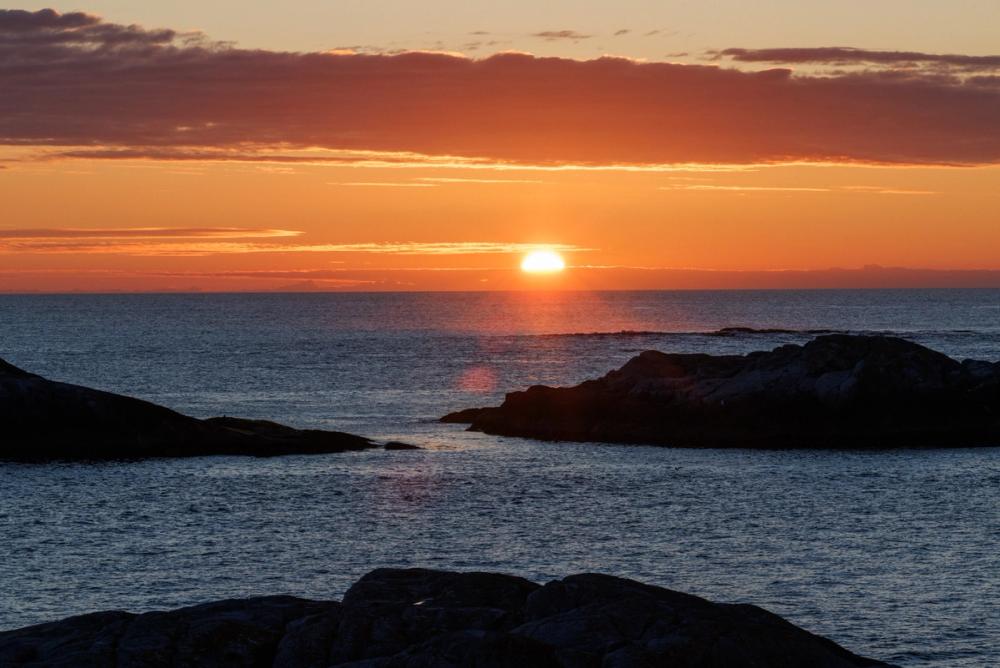
The myriads of small rocks surrounding the island of Grip.
Share this story
- Ecosystems and habitats


